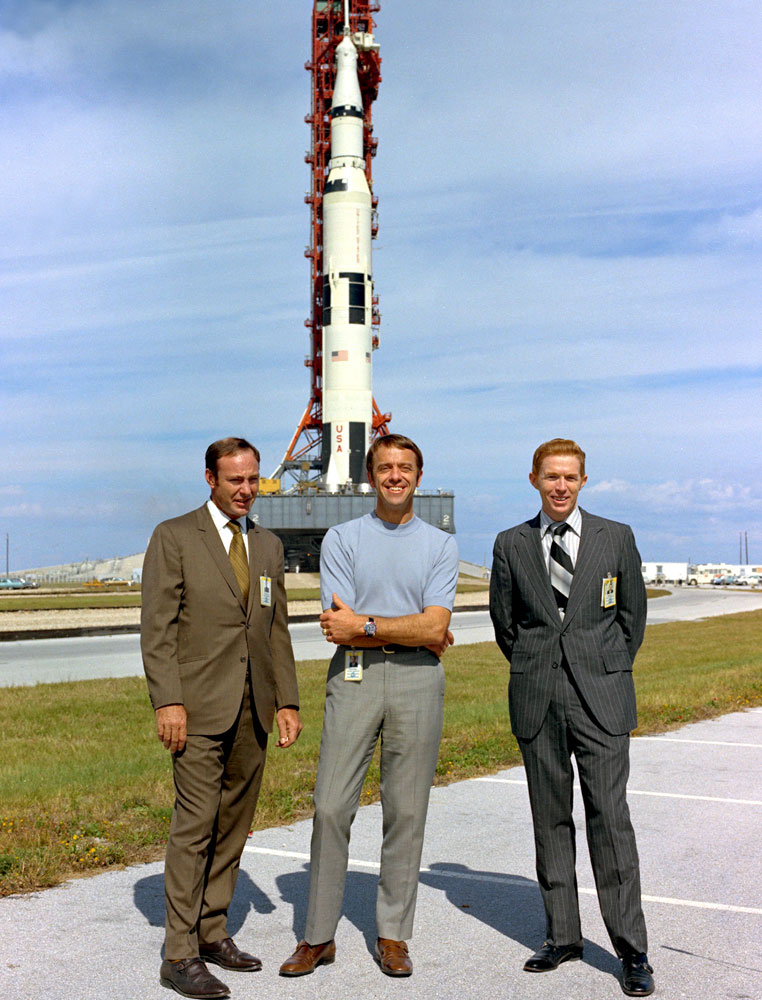
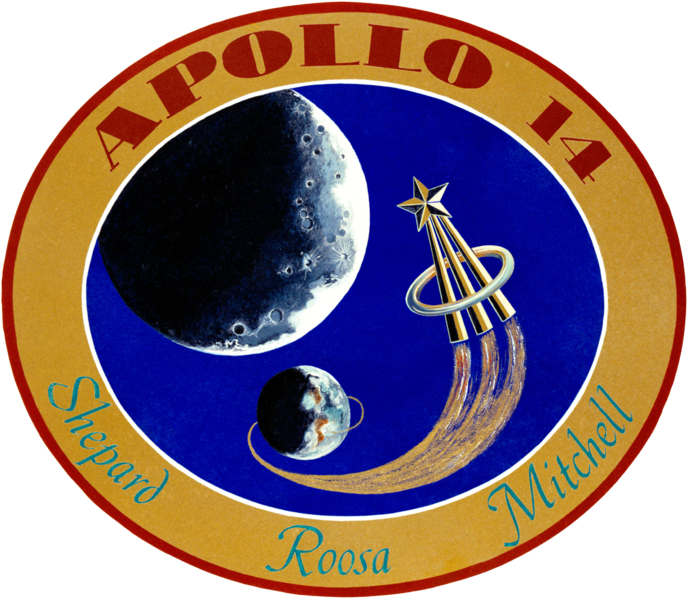 31 January 1971, 04:03:02 a.m., Eastern Standard Time: Apollo 14 (AS-509) lifted off for The Moon from Space Flight Launch Complex 39A, Kennedy Space Center, Cape Canaveral, Florida. The Mission Commander was Captain Alan Bartlett Shepard, Jr., United States Navy. The Command Module Pilot was Colonel Stuart Allen Roosa, United States Air Force, and the Lunar Module Pilot was Captain Edgar Dean Mitchell, Sc.D., United States Navy. Their destination was the Fra Mauro Highlands.
31 January 1971, 04:03:02 a.m., Eastern Standard Time: Apollo 14 (AS-509) lifted off for The Moon from Space Flight Launch Complex 39A, Kennedy Space Center, Cape Canaveral, Florida. The Mission Commander was Captain Alan Bartlett Shepard, Jr., United States Navy. The Command Module Pilot was Colonel Stuart Allen Roosa, United States Air Force, and the Lunar Module Pilot was Captain Edgar Dean Mitchell, Sc.D., United States Navy. Their destination was the Fra Mauro Highlands.
Apollo 14 was the eighth manned mission of the Apollo Program, and the third to land on the surface of the moon.
Alan Shepard was the first American astronaut. He flew into space aboard a Mercury spacecraft, Freedom 7, launched from Cape Canaveral by a Redstone rocket, 5 May 1961.
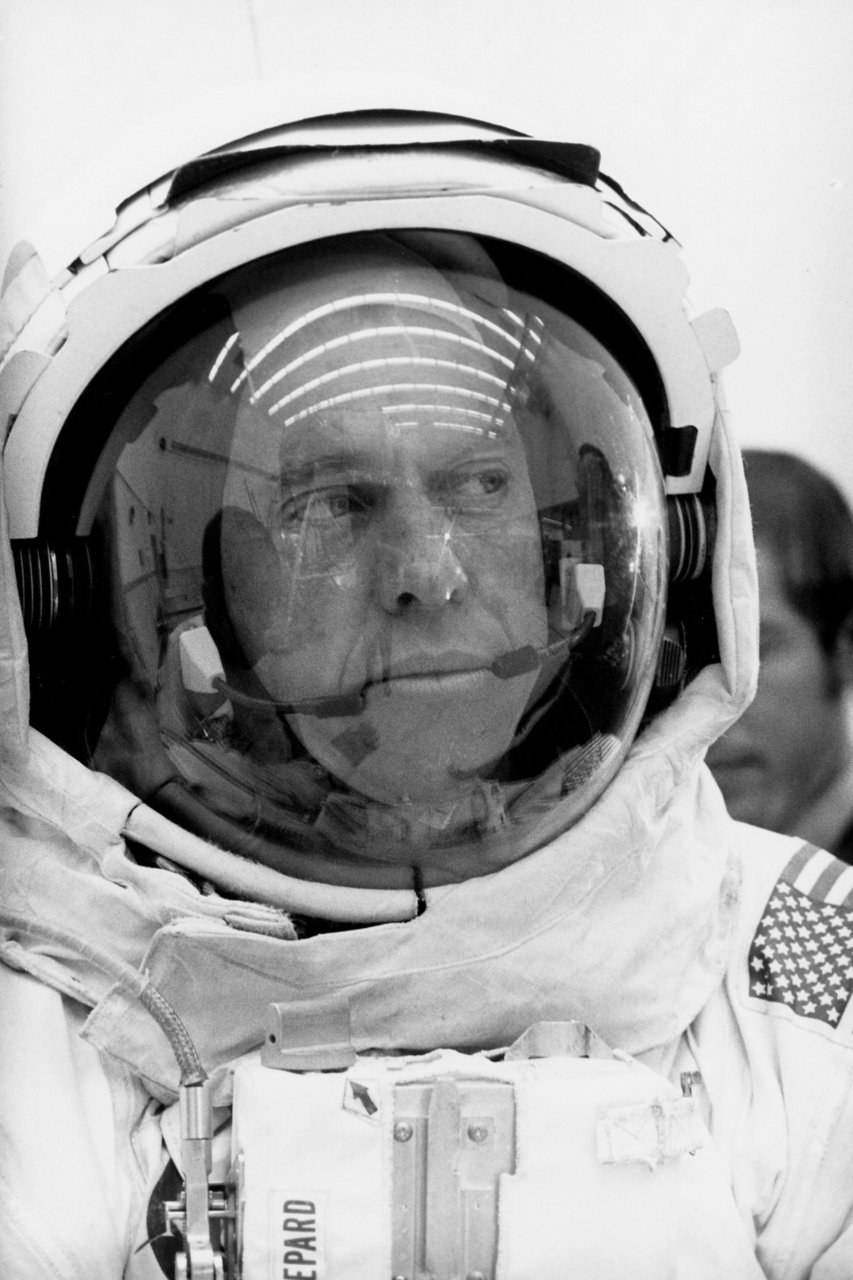
Mitchell and Roosa had not flown in space before. This would be their only space flight.
The Apollo Command/Service Module was built by the Space and Information Systems Division of North American Aviation, Inc., at Downey, California.
The SPS engine was an AJ10-137, built by Aerojet General Corporation of Azusa, California. It burned a hypergolic fuel combination of Aerozine 50 and nitrogen tetraoxide, producing 20,500 pounds of thrust (91.19 kilonewtons). It was designed for a 750 second burn, or 50 restarts during a flight.
The Saturn V rocket was a three-stage, liquid-fueled heavy launch vehicle. Fully assembled with the Apollo Command and Service Module, it stood 363 feet (110.642 meters) tall. The first and second stages were 33 feet (10.058 meters) in diameter. Fully loaded and fueled the rocket weighed 6,200,000 pounds (2,948,350 kilograms). It could lift a payload of 260,000 pounds (117,934 kilograms) to Low Earth Orbit.
The first stage was designated S-IC. It was designed to lift the entire rocket to an altitude of 220,000 feet (67,056 meters) and accelerate to a speed of more than 5,100 miles per hour (8,280 kilometers per hour). The S-IC stage was built by Boeing at the Michoud Assembly Facility, New Orleans, Louisiana. It was 138 feet (42.062 meters) tall and had an empty weight of 290,000 pounds (131,542 kilograms). Fully fueled with 203,400 gallons (770,000 liters) of RP-1 and 318,065 gallons (1,204,000 liters) of liquid oxygen, the stage weighed 5,100,000 pounds (2,131,322 kilograms). It was propelled by five Rocketdyne F-1 engines, producing 1,522,000 pounds of thrust (6770.19 kilonewtons), each, for a total of 7,610,000 pounds of thrust at Sea Level (33,850.97 kilonewtons). These engines were ignited seven seconds prior to lift off and the outer four burned for 168 seconds. The center engine was shut down after 142 seconds to reduce the rate of acceleration. The F-1 engines were built by the Rocketdyne Division of North American Aviation at Canoga Park, California.
The S-II second stage was built by North American Aviation at Seal Beach, California. It was 81 feet, 7 inches (24.87 meters) tall and had the same diameter as the first stage. The second stage weighed 80,000 pounds (36,000 kilograms) empty and 1,060,000 pounds loaded. The propellant for the S-II was liquid hydrogen and liquid oxygen. The stage was powered by five Rocketdyne J-2 engines, also built at Canoga Park. Each engine produced 232,250 pounds of thrust (1,022.01 kilonewtons), and combined, 1,161,250 pounds of thrust (717.28 kilonewtons).
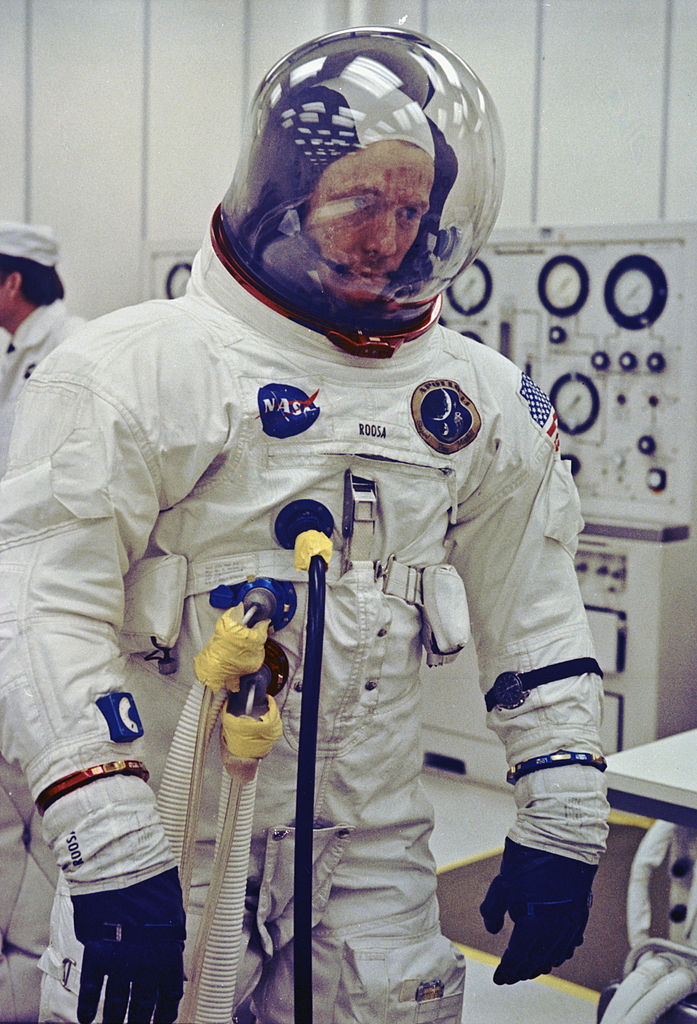
The Saturn V third stage was designated S-IVB. It was built by Douglas Aircraft Company at Huntington Beach, California. The S-IVB was 58 feet, 7 inches (17.86 meters) tall with a diameter of 21 feet, 8 inches (6.604 meters). It had a dry weight of 23,000 pounds (10,000 kilograms) and fully fueled weighed 262,000 pounds. The third stage had one J-2 engine and also used liquid hydrogen and liquid oxygen for propellant. The S-IVB would place the Command and Service Module into Low Earth Orbit, then, when all was ready, the J-2 would be restarted for the Trans Lunar Injection.
Eighteen Saturn V rockets were built. They were the most powerful machines ever built by man.
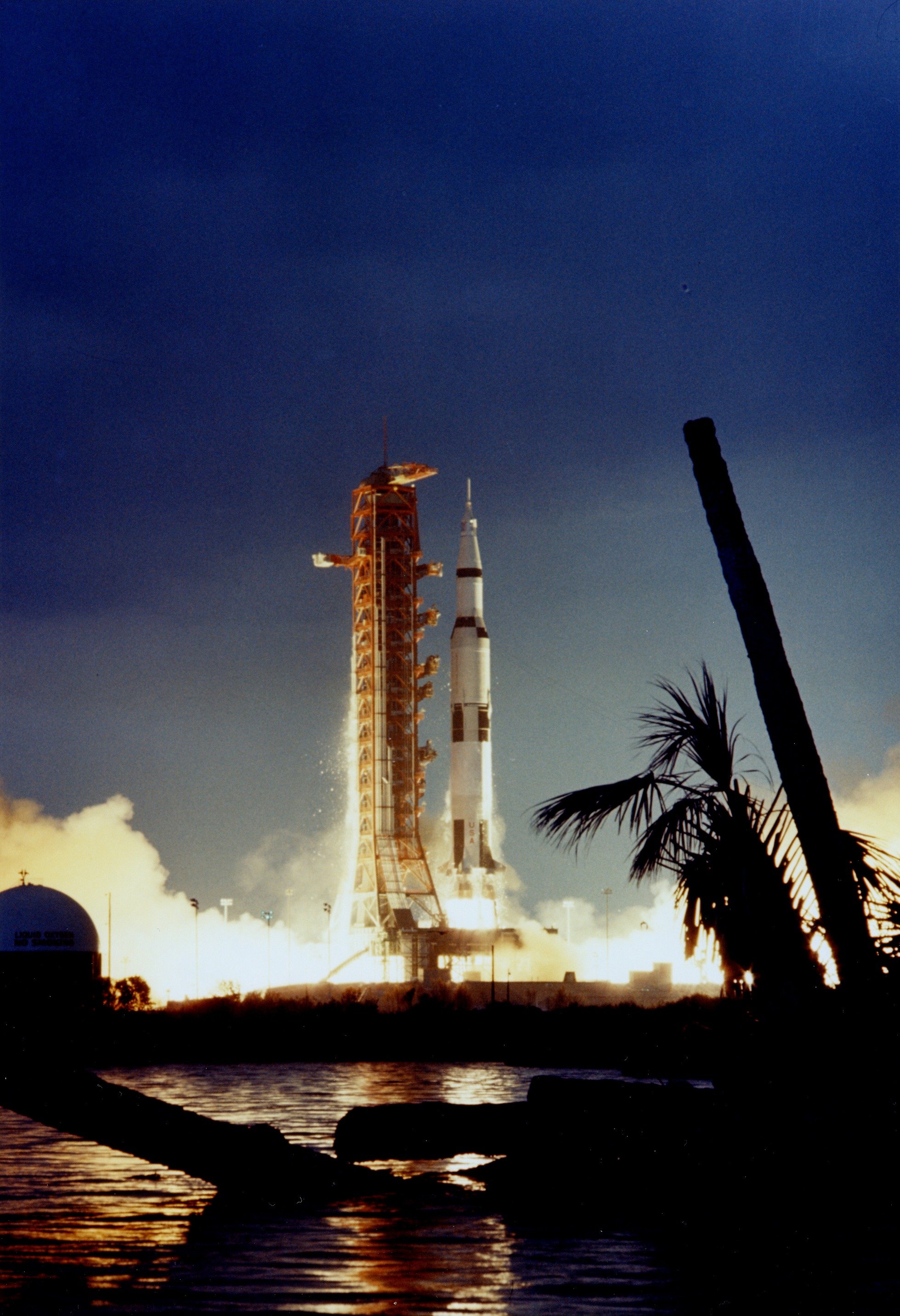
© 2019, Bryan R. Swopes
RIP U.S. Navy Captain Rosemary Mariner
https://www.avweb.com/eletter/archives/101/4244-full.html?ET=avweb:e4244:2336868a:&st=email#232211
Thanks, David. Captain Mariner was the commanding officer of VAQ-34 at NAS Point Mugu, about ten miles from the desk where I am sitting.
Captain Rosemary Mariner, United States Navy, Retired, died on January 24, 2019, in the fifth year of her battle with ovarian cancer, with her husband and wingman of 40 years by her side. She was 65. Born in Harlingen, Texas, raised in San Diego, she graduated from Purdue University with a degree in aeronautics at 19. Captain Mariner was one of the first eight women selected to fly military aircraft in 1973. After flight training in 1974, she became the Navy’s first female jet pilot flying the A-4C and the A-7E Corsair II. She moved to the Naval Weapons Center in China Lake, then Air Test and Evaluation Squadron 5. For sea duty, in 1982 she reported aboard USS Lexington, where she qualified as a Surface Warfare Officer.
In 1990, she became the first woman to command a military aviation squadron, VAQ-34, based at the Pacific Missile Test Center at Pt. Mugu, CA. She attended the National War College in Washington, DC, earning a Masters in National Security Strategy, and served on the Staff of the Joint Chiefs in the Pentagon. Her final military assignment was as the Chairman of the Joint Chief’s Chair in Military Strategy at the National War College, before retiring in 1997. Throughout her career, Captain Mariner was both willing to serve as a mentor to others and deeply grateful to the men and women who enabled her to pursue her dreams. She was instrumental in the repeal of restrictions on women serving in combat.
In retirement, Captain Mariner was a resident scholar at the Center for the Study of War and Society at the University of Tennessee in the History Department where she taught classes in military history, emphasizing the intersections of war and conscience. She continued to serve as an advisor on national defense policy and women’s integration into the military for ABC News, PBS and the Department of the Navy. A voracious reader and an eager academic, she devoted herself to a love of knowledge. In recent years, this included the disease which took her life, which she sought to understand as fully as possible. As expected, she tenaciously fought an implacable foe to the end. She lived in Norris, Tennessee, with her husband, retired Navy Commander Tommy Mariner, and their daughter, Emmalee, who attends Duke University.
The family will receive friends from 10:00 to 11:00 AM, on Saturday, February 2, 2019, at Norris United Methodist Church, with a funeral to follow at 11:00 AM. Funeral mass will be at 1:00 PM at St. Joseph’s Catholic Church, with full military graveside service to follow at New Loyston Cemetery. Holley-Gamble Funeral Home in Clinton is in charge of all arrangements. In lieu of flowers, the family will accept donations to Sacred Ground Residential Hospice.